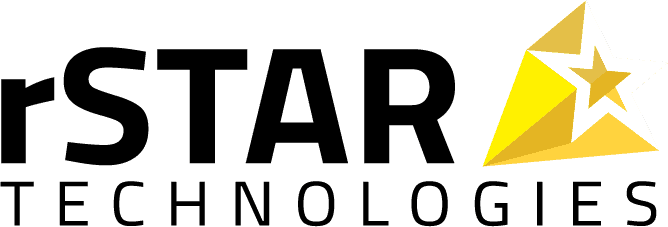Microservices architecture is a buzzword in the tech industry, but what exactly does it mean, and why is it gaining so much attention? In this article, we’ll explore the world of microservices, discussing their benefits, challenges, and best practices for seamless integration.
Table of Contents
What Is Microservices Architecture?
Microservices architecture is a software development approach in which applications are built as a collection of small, stand-alone services. Each service runs a unique process and talks with others through a simple method, typically an HTTP-based API. Whereas monolithic architectures use a single codebase that holds all the moving parts, microservices architecture breaks down the application into smaller, manageable pieces.
Microservices Architecture Benefits
Scalability
One of the main advantages is the ability to scale services independently. For instance, if one service experiences high demand, you can scale just that service without affecting the entire system.
Flexibility in Technology Stack
With microservices, a company can design different services using various programming languages or frameworks. Indeed, this allows teams to choose the best tools for each job and for the team’s strengths.
Better Fault Isolation
In a monolithic architecture, a failure in one part will bring down the entire system. However, microservices architecture isolates the failures, reducing the risk of a complete system shutdown.
Faster Time to Market
By breaking down applications into smaller components, development teams can work on different services at the same time, speeding up the development process.
Easy Maintenance and Updates
Since each microservice is a separate part, each can be updated or maintained without impacting other parts of the application.
Microservices Architecture Example
Many large e-commerce platforms use microservices architecture. Generally, the platforms often consist of services such as:
- User Service: Manages user data, authentication, and authorization.
- Product Service: Handles product information, inventory management, and pricing.
- Order Service: Manages the order processing, payment, and order history.
- Notification Service: Sends notifications, emails, or messages to users.
Above all, each of these services runs independently yet works together to form a complete system.
Monolithic vs. Microservices Architecture
Understanding the difference between monolithic and microservices architecture is critical to choosing the right approach for your application.
Monolithic Architecture
In a monolithic setup, the entire application is built as a single unit. As a result, all parts are dependent on each other. Therefore, when problems arise, it either works or it doesn’t. Undoubtedly more straightforward to develop initially, monolithic architectures become cumbersome to scale and maintain as the application grows. In the long run, the application always grows.
Microservices Architecture
Here, the application is divided into many loosely coupled services. Because of that, each service can be developed, deployed, and scaled independently. Undeniably, this independence offers greater flexibility yet comes with its own set of complexities.
Transitioning from a monolithic to a microservices architecture can significantly improve performance and agility. For example, Emerson, a Fortune 500 manufacturer, successfully transformed its customer lifecycle services by leveraging microservices to modernize its legacy point-point integration architecture.
Challenges in Microservices Architecture
While the benefits are numerous, microservices architecture also comes with challenges if the architecture and design patterns are designed correctly:
Complexity in Management
Managing multiple services can be complex. In reality, you need to monitor, maintain, and secure each service individually, which can be a daunting task.
Network Latency and Fault Tolerance
Since microservices communicate over a network, there’s always a risk of latency or network failure. Because of that, building fault-tolerant services is crucial to minimize disruptions.
Data Management
With multiple services, data consistency and integrity can become an issue. Therefore, proper database management strategies are necessary to ensure seamless data flow across services.
Deployment Overhead
Deploying a microservices architecture requires a robust CI/CD pipeline to handle frequent deployments and updates efficiently.
Inter-Service Communication
It is essential to design efficient communication mechanisms between services. Poorly designed APIs lead to bottlenecks and poor performance.
Best Practices for Seamless Integration
To make the most out of microservices architecture, use the following best practices:
Adopt Agile Methodologies
Using an Agile framework like SAFe Agile can help break down complex projects into manageable tasks. This approach was key to the success of rSTAR’s microservices transformation for a Fortune 500 manufacturer.
Use API Gateways
Set up an API Gateway to manage communication between microservices. Mainly, it acts as a single-entry point, simplifying the client-to-microservices interaction.
Containerization
Use containers (e.g., Docker) to package microservices. By doing so, it promotes consistency across different environments and simplifies deployment.
Implement Robust Monitoring
Use monitoring tools to track the health and performance of each microservice. This helps quickly identify and resolve issues.
Automate Testing and Deployment
Automate the testing and deployment processes to ensure that new code can be integrated and released efficiently without causing downtime.
Design for Failure
Implement strategies like circuit breakers and retries to handle failures gracefully. Always design your services with fault tolerance in mind.
Real-World Application: rSTAR’s Expertise
rSTAR has a proven track record of helping companies transition to microservices. Working with platforms like MuleSoft, Boomi, Oracle Integration and programming languages like Java, nodeJS, Python, etc, rSTAR has assisted major companies, including Fortune 500 manufacturers and Fortune 250 utilities, to reduce technical debt and enhance operational agility. In a recent webinar with Emerson, Bryan Schappell discussed how rSTAR’s microservices strategy helped modernize their Oracle-based system, resulting in a more flexible and efficient customer service platform.
Conclusion
Microservices architecture provides a flexible and scalable solution for modern application development. Despite its challenges, the benefits far outweigh the complexities, making it the preferred choice for many organizations. As a matter of fact, whether you’re starting your microservices journey or looking to enhance your existing setup, rSTAR’s expertise will guide you toward a seamless transition. Due to our proven experience in transforming legacy systems, rSTAR is well-equipped to help you unlock the full potential of microservices architecture.
Are you ready to transition to microservices architecture and reduce your technical debt? Contact rSTAR for a consultation. With experience working with Fortune 500 manufacturers and Fortune 250 utilities, we will help you achieve a seamless transition to a microservices-based system. Visit rSTAR Microservices Consulting to learn more.


